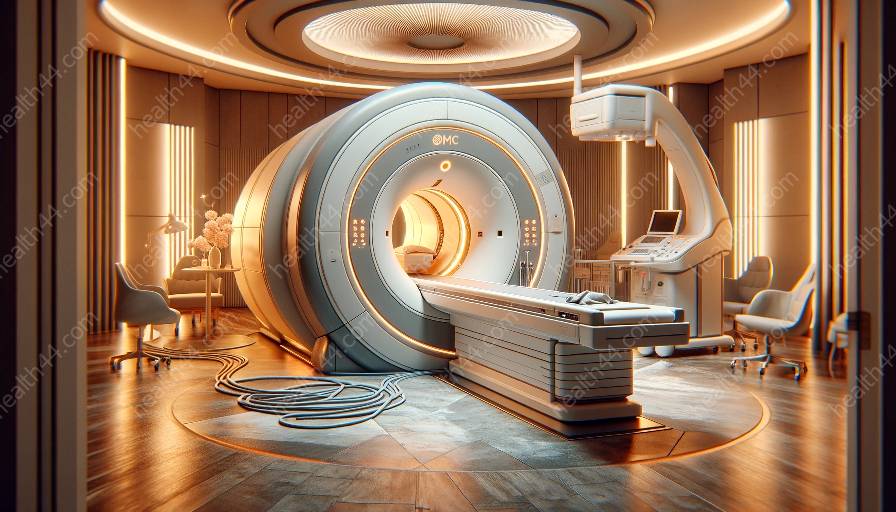Magnetic Resonance Imaging (MRI) has revolutionized the field of medical imaging, providing clinicians with high-resolution, non-invasive images of internal body structures. When it comes to imaging the abdomen and pelvis, MRI machines play a crucial role in diagnosing various medical conditions, providing unparalleled insight into the organs and tissues in these regions.
Understanding MRI Technology
MRI machines utilize a powerful magnetic field and radio waves to generate detailed images of the body's internal structures. Unlike traditional X-rays or CT scans, MRI imaging doesn't use ionizing radiation, making it a safer option for patients. The technology relies on the magnetic properties of hydrogen atoms in the body, aligning them using the magnetic field and then disrupting their alignment with radio waves to capture the signals emitted as they return to their natural state.
The images produced by MRI machines are especially valuable for examining soft tissues and organs in the abdominal and pelvic regions, such as the liver, kidneys, pancreas, reproductive organs, and gastrointestinal tract. This capability makes MRI an invaluable tool for identifying tumors, inflammation, infections, and other abnormalities that may not be clearly visible with other imaging modalities.
Medical Devices and Equipment in MRI Imaging
State-of-the-art MRI machines are equipped with a range of medical devices and equipment designed to optimize imaging quality and patient comfort. Advanced radiofrequency coils, gradient systems, and sophisticated software play integral roles in capturing high-quality abdominal and pelvic images.
RF Coils: These specialized coils are essential components of MRI machines, used to send and receive radio waves during the imaging process. Different types of RF coils are utilized to target specific areas of the abdomen and pelvis, allowing for tailored image acquisition based on the anatomy of interest.
Gradient Systems: Gradient coils are responsible for spatially encoding the signals received from the RF coils, enabling the creation of detailed cross-sectional images. The precise control of gradient coils is crucial for obtaining clear and accurate representations of abdominal and pelvic structures.
Advanced Software: MRI machines are supported by advanced imaging software that processes the raw data collected during the scan, reconstructing it into detailed, multi-dimensional images. These software solutions are constantly evolving to enhance image quality, reduce scan time, and improve diagnostic accuracy.
Challenges and Innovations
While MRI imaging of the abdomen and pelvis has advanced significantly, certain challenges remain, such as patient motion artifacts, breath-holding difficulties, and the need for contrast agents to enhance certain types of images. Researchers and manufacturers continue to innovate in the field, developing solutions to address these challenges and improve the overall image acquisition process.
One notable innovation is the introduction of motion correction techniques that mitigate the impact of patient movement during MRI scans, leading to sharper and more reliable abdominal and pelvic images. Additionally, the development of new contrast agents with improved safety profiles and enhanced tissue specificity has expanded the diagnostic capabilities of MRI technology in abdominal and pelvic imaging.
Diagnostic and Therapeutic Applications
The diagnostic applications of MRI in abdominal and pelvic imaging are vast, encompassing a wide range of medical conditions. From detecting liver and kidney diseases to evaluating gynecological and urological disorders, MRI plays a pivotal role in early detection and accurate characterization of abnormalities.
Furthermore, MRI-guided interventions and therapeutic procedures have become increasingly prevalent in clinical settings. By combining real-time MRI imaging with minimally invasive techniques, clinicians can precisely target and treat lesions within the abdomen and pelvis, offering patients less invasive treatment options with enhanced precision and safety.
The Future of Abdominal and Pelvic Imaging
As the field of MRI continues to evolve, the future of abdominal and pelvic imaging holds tremendous promise. Ongoing research is focused on refining imaging protocols, developing novel contrast agents, and integrating artificial intelligence (AI) to automate image analysis and enhance diagnostic accuracy.
The integration of AI and machine learning algorithms is expected to streamline the interpretation of abdominal and pelvic MRI images, facilitating faster diagnosis and personalized treatment planning. Additionally, advancements in MRI technology, such as ultra-high field strength systems and novel coil designs, are poised to further enhance the spatial and temporal resolution of abdominal and pelvic images, ushering in a new era of precision medicine.
Abdominal and pelvic imaging with MRI machines stands at the forefront of modern healthcare, offering clinicians and patients unparalleled insights into the intricate anatomical structures and pathological conditions within these vital regions of the body. With ongoing technological advancements and innovative approaches, MRI continues to push the boundaries of diagnostic imaging, shaping the future of medical practice and patient care.


